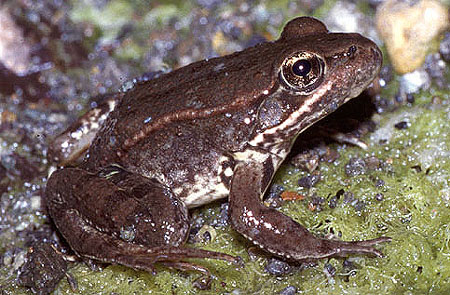Facts About California red-legged frog
The California red-legged frog is a unique species primarily found in California and northern Baja California. Initially considered a subspecies of the northern red-legged frog, it has since been recognized as a distinct species and is listed as vulnerable by the IUCN. In the United States, it holds the status of a federally threatened species and is afforded legal protection.
This frog is typically found along the northern and southern Coast Ranges and in the Sierra Nevada foothills. Unfortunately, its population has suffered a significant decline, vanishing from approximately 70% of its historic range. Currently, populations exist in 28 counties across California.
The California red-legged frog is medium to large in size and is characterized by distinctive coloration and markings. The breeding season spans from November to March, during which males produce soft grunting sounds underwater to attract females. Tadpoles undergo metamorphosis into frogs over a period of 7 to 13 months.
Habitat loss and destruction pose major threats to this species. Additionally, introduced predators such as the American bullfrog present significant risks.
There are, however, active conservation efforts aimed at protecting the California red-legged frog. Critical habitats have been designated and expanded over the years. The U.S. Fish and Wildlife Service has even proposed significant habitat expansions to ensure the species' survival. Underscoring its importance, California designated the frog as its state amphibian in 2015, reflecting the state's commitment to preserving this remarkable creature.

 Canada
Canada